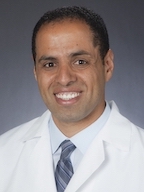Liver Cysts
Liver cysts are thin-walled sacs filled with air, fluids, or semi-solid material. Liver cysts occur in approximately 5% of people. The majority of cysts are benign, but all cancers are able to produce malignant cysts. Patients typically present with a single liver cyst, although multiple cysts sometimes develop. Liver cysts rarely impair the liver's ability to function.
Most liver cysts do not cause symptoms. If they do occur, symptoms include:
- Upper abdominal fullness, discomfort, or pain.
- Sudden and severe right upper quadrant and shoulder pain caused by bleeding into the cyst, but this occurs In only in a small group of patients,
Diagnosis & Treatment
Cysts are diagnosed using ultrasound or with a CT scan. Only patients with symptoms require treatment, which consists of surgically removing a large portion of the cyst wall. Only removing the fluid from the cyst is ineffective because it will fill up again within days.
The procedure is performed laparoscopically, requiring only 2-3 small incisions with little chance of recurrence.
Polycystic Liver Disease (PLD)
Polycystic liver (PLD) disease is rare, affecting 6 out of 1,000 people. Liver cysts present as small or large grape-like clusters or a mixture of both. PLD is congenital and very often develops along with autosomal dominant polycystic kidney disease (AD-PKD). It has been estimated that at least 90 of patients with AD-PKD have liver cysts.
Treatment
Unlike the kidney failure that inevitably results from polycystic kidney disease, PLD does not lead to liver failure and, in fact, most patients do not require surgery. However, if the liver become massively enlarged due the cysts so that it presses against nearby organs, surgery is then required to open or remove the cysts. In extreme cases of PLD where there is liver failure, liver transplantation is required.
Cystic Tumors
Cystic tumors are abnormal masses that have the potential to become malignant. Benign cystic tumors are called cystadenomas; their malignant counterparts are called cystadenocarcinomas.
Symptoms of cystic tumors include abdominal fullness and pain. Ultrasound and CT scans are used to diagnose cystic tumors, which have both liquid and solid components. Because of their malignant potential, all.cystic tumors should be surgically removed.







